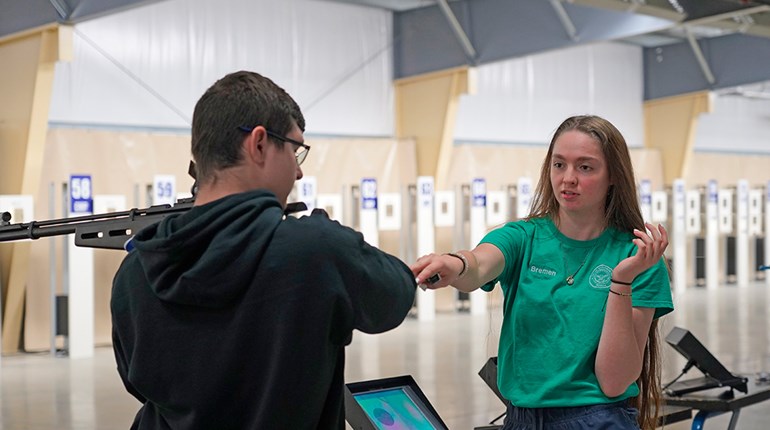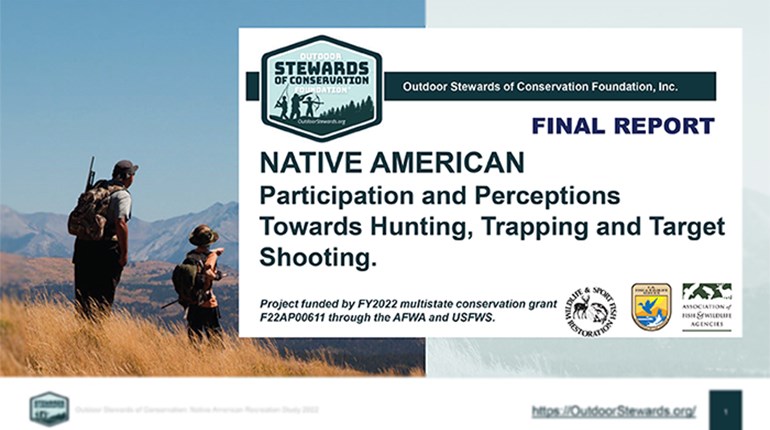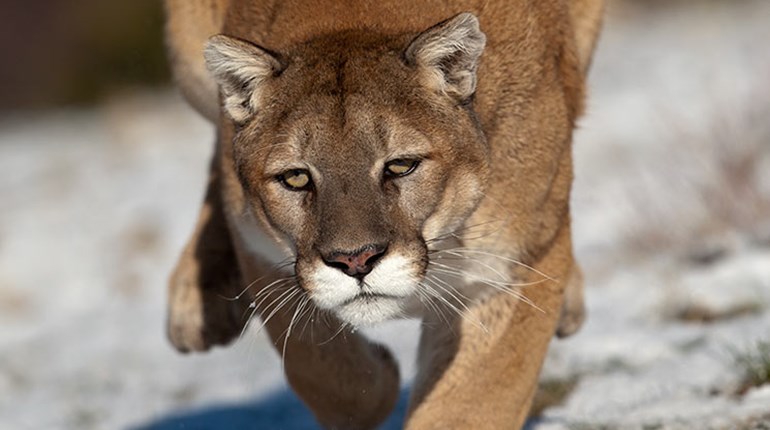When Mr. Raymond Long, 87, hunts the woods of the Atchafalaya Basin south of Baton Rouge, he no longer hears baying hounds, the whump of Winchester Model 12s or the three-peat blasts of a bullhorn signaling a deer for the camp’s buck pole. Still, those sounds remain rich memories more than 30 years after they routinely echoed through the basin’s briars and bayous. The hunting camp itself, however, remains much the same as when his grandfather, Joseph Oscar Long, founded it in 1935 with Mr. Raymond’s father, Rauhman Oscar Long.
The Long family’s deer hunting legacy lives on through Mr. Raymond’s friends and grandchildren like John, Chad and Evan Steib, and great-grandson, Wade, who all live about an hour north of camp near Mr. Raymond’s home in Lottie, La.
Six generations have shaped the Long Camp, which also has embraced women and children throughout its history. Of course, its members must follow camp rules, customs and superstitions. That means no swearing, no hunting before signing in and no wearing hats at the dinner table.
No one questions such rules. The Long Camp’s members cling to their heritage like Spanish moss to swamp oaks. When meeting guests, most members explain their presence by tracing their roots to men who hunted the camp years before. Among those on the camp’s storied rolls are Mr. John Barton, Mr. H.B. “Cotton” Fairchild, Mr. Ramie Fairchild, Mr. Wick Babbin, Mr. Morris “Colonel” Wimbley, Mr. George Connell, Mr. Charlie McKay, Mr. Bert Newsome and son John; and the Piries, which included the father, Mr. Gordon, and sons Gordon Jr., Thomas and Frank.
Notice all those “misters.” Southern culture quietly mandates the title before a respected gentleman’s name, be it his first, last or both. Sure, Mr. Raymond’s grandsons call him “Pa,” but no one calls him just “Raymond” or “Long.”
Just as certainly, the Louisiana lowlands they hunt remain shaped by fabled rivers like the Red, Grand, Mississippi and Atchafalaya. The camp’s first building was actually a houseboat the founders dragged in alongside a government levee that protects the camp from the Atchafalaya’s floodwaters. They towed it at 2 mph with an 8-hp Lockwood-Ash inboard engine, doggedly negotiating the river, bayous and—finally—the Rahma Bar Pit, the moat between the levee and swamplands.
The houseboat eventually sank after settling onto an old cypress stump that punched through its bottom. Undaunted, the hunters salvaged it, pulled it across the pit, and put it up on blocks. In 1961, the houseboat finally gave way to a cabin and inevitable additions. The big cabin and its tin roof have served as the camp headquarters and bunkhouse ever since.
Hounding Heritage
How did the Long Camp’s founders choose this remote setting? After all, even 80 years later the camp remains miles from paved roads and main river channels, and only intermittently within range of cell-phone signals.
“When Highway 190 got built through Lottie in the early 1930s, the men started losing their dogs when cars ran them over,” Mr. Long says. “They soon had enough of that. They moved down to where the cars wouldn’t run over anymore dogs. Dogs were our deer hunting. Some guys would have quit deer hunting if they didn’t have hounds.”
When Mr. Raymond visits camp today, he gets wistful when viewing the long-vacant kennel. Rusted fencing clings to the kennel’s posts of willow logs and railroad ties, which are slowly decaying into the briars, sycamores and inky soil. At its peak, the kennel corralled about 20 howling hounds, each demanding to be among the 10 or so chosen for the next chase.
Mr. Raymond says the competition between dog owners was just as relentless. They never stopped claiming their dogs were the camp’s elites as they waited atop the levee by the old houseboat. There they listened as their hounds ran deer, identifying them by their barks and howls. “There’s old Juel’s dog,” someone would say. Or Cotton Fairchild would announce, “There’s ol’ Fancy,” and shush everyone so they could hear his prize hound.
“Cotton had dogs, Daddy had dogs and Mr. George Connell had dogs,” Mr. Raymond says. “Not many of us had dogs, and not many dogs stood out much, but Cotton sure liked Fancy. Ol’ Fancy: Cotton thought she was the next best thing to the old preacher we had. One time I killed two bucks when Cotton was across the levee from me. Every time I’d get ready to shoot, he’d be over there yelling, ‘Don’t kill ol’ Fancy!’ He wouldn’t have cared if I had shot the rest of them, but don’t kill Ol’ Fancy!”
Not surprisingly, Mr. Raymond shot his first buck over hounds. He was 10 years old and shooting a .410 shotgun. “Before we’d go deer hunting, I’d sit in front of the fireplace, take the buckshot out of an old 12-gauge shell and fill my .410 shells with them,” Mr. Raymond said. “I’d stuff them down in there. They’d hold about five buckshots. I killed several deer with that old .410, yes sir. The first deer I killed was right in front of camp on Bayou Hooper.” (For the record, Mr. Raymond pronounces Bayou Hooper as “by-houpa.” Only Yankees like me pronounce it “by-oo hooper.”)
Mr. Raymond continues: “I heard the dogs coming and heard that buck hit the bottom below me. He was in the water, cooling himself. I eased over to the bank and he saw me about the time I saw him. He wheeled to go back, and I shot him going up the bank. I broke his shoulder, but he crossed over the bayou and another man shot and killed him about 200 yards away from me. The deer had hardly hit the ground and I was over there. I told him, ‘You killed my deer.’ I showed him the broken shoulder. He laughed and said, ‘You sure did.’ He gave me the horns, so I was happy.”
Bayou Memories
When Mr. Raymond later shot his biggest buck—a big-racked 11-pointer—his excitement almost got him killed.
“I was 16, and I took three dogs and put them out on Grand River,” Mr. Raymond says. “They ran out and jumped a buck. I was standing broad open when that deer ran 30 yards from me. My first shot broke his left shoulder, but he crossed the river. The dogs swam after him. They bayed him on the other side and brought him back to me. I shot him again. He ran into the woods and they bayed him across the river again. The dogs were up on the bank and the deer was down on the bank’s edge. I jumped into my boat, ran it up behind him, and shot him in the back of his head.
“That was the biggest deer! I pulled him into the boat and laid him up front because I wanted everyone to see him. I got the dogs in and we started off, but the boat went under and came up half-filled with water. I cut the motor and bailed. After I got the water out, I pulled the deer into the bottom of the boat, got the dogs back in, and went on in. I nearly sank that boat just because I was so proud.”
One of the camp’s most somber stories also involves hounds. Here’s Mr. Raymond’s account: “Mr. Bert Newsome was with the FBI. He was there in Chicago, outside that theater, when they shot John Dillinger. Mr. Bert must have been in his 40s, and his son was about 10.
“Anyway, it was 1950, and Mr. Bert had come down with a bad heart. His doctor told him to stay home and rest. Mr. Bert said, ‘Doc, do you think I’m fixin’ to die?’ And he said no, he wouldn’t say that, but he wanted Mr. Bert to stay home. Mr. Bert said ‘if I’m going to die, I’m going to die in camp.’
“He came down to camp and the next morning we went hunting. I put him on a stand, and in the middle of the morning the dogs came by and he shot twice. I waited about an hour before walking over to see if he needed help with his deer. When I got there I saw him lying on his face. He had dropped dead. The dogs were lying around out there in the woods.
“That was so strange because those Walker hounds never stopped for anything. When you killed a deer, they’d go out and jump another deer and keep going. But this time they all stayed right there. There was also a group of cattle standing there in the woods. It was the strangest thing I’ve ever seen and experienced. Those animals all knew something was wrong.
“Anyway, I picked up Mr. Bert, put him in the wagon and brought him out. That was really an experience. It turns out, Mr. Bert had killed a deer—a 7-point buck. I never noticed his deer that day. A few days later I went back to look around and found that buck right where the dogs had been. I cut off its horns and gave them to Mr. Bert’s son.”
Summon Them Home
A deer camp with hounds is seldom quiet, and the Long Camp’s hard-working dogs often kept hunting past sunset. “We got a lot of use out of our hunting horns some nights,” says Mr. Raymond.
A quick lesson in the camp’s hunting horns, which were made from the actual horns of bulls: One horn blast was the look-out call, meaning a deer was coming. Two blows signaled “message received.” Three blows meant someone killed a deer or needed help, and four blows meant you were lost. Constant blowing meant the camp was calling home their dogs.
“When the hounds didn’t come back at night, the men sent the boys outside to blow their horns and get those dogs in,” Mr. Raymond says. “The dogs in the kennel would be barking, the horns would be blowing, and the dogs out in the swamp knew horns meant food and a warm place to sleep.”
Automobiles eventually chased the hounds from the Long Camp for good, but the process was more subtle than Highway 190’s road-kills a half-century earlier. Cars, vans and trucks brought more hunters into the swamps surrounding the Long Camp as the 1970s came and went, and properties increasingly broke into smaller camps with tighter boundaries. With nowhere to run, hounds quit running by the early 1980s.
“Everyone started sitting on stands with rifles and bows,” Mr. Raymond says. “We had no choice. You’d turn your dogs loose and they’d be running onto the other hunting club.”
Horses and Horsepower
Horses also worked at the Long Camp, especially in the mid-1900s. The Pirie brothers joined the camp as youngsters during the 1950s when their father, Gordon, brought them. Frank Pirie said horses were the most reliable way to reach camp, and they hauled deer with little effort. But unlike boats, trucks, tractors or ATVs, horses can be unreasonable.
“During the 1959-60 deer season, I was 9, and I remember Daddy firing his old Model 12 Winchester three times: pow, pow, pow,” Frank says. “Then he blew his horn three times. He came and got us. We went back in there with Buck, Daddy’s horse. Daddy made sure Buck didn’t see his deer because he knew it would spook him. Daddy put a rope through the deer’s antlers, put a half-hitch around its nose, and tied it off on the pummel of Buck’s saddle.
“On the way out, Buck turned, saw that deer dragging on the ground behind him and lunged forward. When the slack came out of the rope, the deer jerked up at him. That was it! Ol’ Buck blew out of there. I was holding the reins, but I was no match for a 1,200-pound horse. The last we saw of him, those stirrups were flapping, and old Buck’s head was straight out and his ears laid back. Daddy’s deer was about a foot off the ground, leaves flying everywhere, and ol’ Buck was busting through saplings and ricocheting off trees.
“Daddy took off that old khaki hat of his, threw it to the ground and yelled, ‘Dadgummit! All my life I’ve wanted to get a deer mounted, and I finally kill a nice 12-point buck worth mounting, and now he’s gone!’ After we walked a ways, we found poor ol’ Buck, flat on his back, hoofs straight up in the air, kicking and bucking. That deer was up on his chest, all tangled up tight against him. They were so tangled that Buck couldn’t get off the ground. His eyes were huge, and he was giving out big, long grunts. Daddy walked up, still holding that Model 12, and stuck it up against Buck’s head. We were horrified. Daddy was so mad. He said, ‘Buck, you old son of a gun. If we didn’t have so far to walk I’d blow your brains out!’
“Well, it took us a while, but we finally got them untangled. Daddy got that old deer mounted and it’s still hanging up today.”
Enduring Bonds
Everyone who earns their place in the Long Camp knows they’re part of something special. When the Pirie brothers were in their mid-teens, a burglar murdered their father in his store.
“Mr. Raymond just adopted us into his camp after that,” says Frank Pirie. “We couldn’t afford anything after Daddy got killed, even hay for our horses. But Mr. Raymond provided all that. He covered all our camp expenses and other things, and he never said a word. We helped him haying. We didn’t have any money, but we knew how to work.”Gordon Pirie believes the camp’s elders helped shape their lives. “Daddy surrounded us with men of integrity,” he says. “Mr. Raymond and Mr. John Barton helped form our character. We’d never do anything to embarrass them. They taught us how to shake a man’s hand, to always look him in the eye, and to believe a man is only as good as his word.
“Certainly, it was a hunting camp and it provided great camaraderie, but it also set a good example for young people. That’s as big a part of the Long Camp as the deer hunting.”
And that also explains why this sixth generation of Louisiana family and friends won’t be the last to call the Long Camp their hunting home.
Photos Courtesy Long Family




































